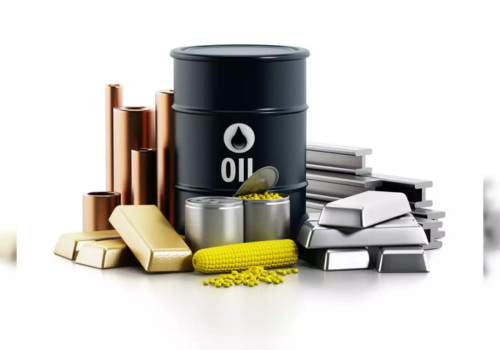
Mastering the Dynamics of Crude Oil, Gold, and
Silver: Essential Knowledge
for Investors;
Crude oil, gold, and silver are pivotal assets in the global market, each with its unique
characteristics and significance. Understanding these commodities’ intricacies can provide
investors with valuable perspectives and opportunities. This guide explores the fundamental
aspects of crude oil, gold, and silver, focusing on their market dynamics, investment
potential, and factors influencing their prices.
Crude Oil: The Lifeblood of Modern Economies:
Market Dynamics
Crude oil is fundamental to global economies, powering transportation, industry, and
heating. The price of crude oil is influenced by various factors, including:
-
Supply and Demand:Global oil supply is subject to geopolitical events, production
levels by major oil-producing countries (e.g., OPEC members), and technological
advancements in extraction (e.g., fracking). Demand fluctuations arise from economic
growth rates, seasonal factors, and shifts towards alternative energy sources.
- Geopolitical Tensions: Conflicts or political instability in oil-rich regions
can disrupt supply chains, leading to price spikes. For example, tensions in the Middle
East often lead to increased oil prices due to fears of supply disruptions.
- Economic Indicators:Oil prices are sensitive to global economic conditions. High
economic growth generally increases oil demand, while economic slowdowns can reduce
consumption and lower prices.
Investment Considerations
Investing in crude oil can be done through various avenues, including:
-
Futures Contracts:These are agreements to buy or sell oil at a predetermined
price in the future, allowing investors to speculate on price movements.
- Oil Stocks: Investing in companies involved in oil exploration, production,
and refining can provide exposure to oil price fluctuations.
- Exchange-Traded Funds (ETFs): Oil ETFs track the performance of oil prices or
oil-related stocks, offering a diversified investment in the sector.
Gold: The Timeless Store of Value
Market Dynamics
Gold has been a store of value for centuries and remains a crucial asset in the financial
world. Key factors influencing gold prices include:
-
Inflation Hedge:Gold is often viewed as a hedge against inflation. When
inflation rises, the purchasing power of paper currency decreases, making gold a
preferred asset to preserve value.
-
Currency Fluctuations: Gold prices are inversely related to the strength of major
currencies, particularly the US Dollar (USD). A stronger USD generally leads to lower
gold prices and vice versa.
- Safe-Haven Asset: During times of economic uncertainty or geopolitical
instability, investors flock to gold as a safe-haven asset, driving up its price.
Investment Considerations
Gold investments can be approached in several ways:
- Physical Gold: Purchasing gold bars, coins, or jewelry provides direct ownership
of the metal.
- Gold Mining Stocks :Investing in companies that mine gold offers indirect
exposure to gold prices.
- Gold ETFs and Mutual Funds: These financial products track gold prices or
invest in gold-related equities, providing a liquid and accessible way to invest in
gold.
Silver: The Versatile Precious Metal
Market Dynamics
Silver is used in various industrial applications, including electronics, solar panels, and medical devices, in addition to its role as a precious metal. Factors affecting silver prices include:
- Industrial Demand: Unlike gold, a significant portion of silver’s value comes from its industrial uses. Economic growth and technological advancements can drive silver demand.
- Precious Metal Trends: Silver often follows gold’s price movements, as both metals are viewed as stores of value. However, silver’s greater industrial application means its price can also be influenced by industrial activity.
- Supply Factors: Silver mining and recycling processes affect supply levels. Significant disruptions or advancements in extraction technology can impact prices.
Investment Considerations
Investing in silver can be approached through:
- Physical Silver : Buying silver bars, coins, or bullion provides direct ownership.
- Silver Mining Stocks: Investing in companies that mine and produce silver can offer leveraged exposure to silver prices.
- Silver ETFs and Mutual Funds :These funds provide an easy way to invest in silver without needing to hold physical metal.
Conclusion
Crude oil, gold, and silver each play a vital role in the global market, offering unique investment opportunities and challenges. Crude oil’s price dynamics are driven by supply and demand, geopolitical events, and economic indicators. Gold remains a timeless store of value, with its price influenced by inflation, currency fluctuations, and economic uncertainties. Silver’s value is shaped by both industrial demand and its role as a precious metal.
Understanding the factors that influence these commodities and exploring various investment methods can help investors make informed decisions. Whether through futures contracts, stocks, ETFs, or physical assets, investing in crude oil, gold, and silver offers diverse opportunities to build a robust portfolio.